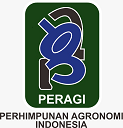PRE-TREATMENT AND ENZYMATIC HYDROLYSIS OF BANANA (Musa acuminata x balbisiana) PSEUDOSTEM FOR ETHANOL PRODUCTION
Abstract
Banana (M. acuminata x balbisiana) is an abundant lignocellulosic waste material in large plantations all over the Philippines, especially in Mindanao, which can be utilized as substrate in producing high-value products like ethanol. To compensate for the low yield based on total weight of substrate due to the high moisture content of banana pseudostem, there is the primary challenge to make the conversion of this lignocellulosic biomass into monomeric sugar and then into ethanol more efficiently in order to achieve yields that would make it cost-competitive. Hence, this study evaluated the effects of solid loading, incubation time and amount of enzyme on yield of reducing sugars in the enzymatic hydrolysis process and attempted to optimize the significant factors by Response Surface Methodology (RSM), specifically using Box-Behnken design. There was significant improvement on the reducing sugar yield of the pretreated banana pseudostem at 20 h incubation time, 15 g solid loading and 0.55 % enzyme concentration. Ethanol production was observed to be higher in the detoxified substrate although biomass was higher for the non-detoxified substrate. As to our knowledge, the present study is the first attempt to produce second generation ethanol using banana pseudostem waste as feedstock in the Philippines.
Keywords
Full Text:
PDFReferences
Adney, B. & Baker, J 1996. Measurement of cellulase activities. Laboratory Analytical Procedure (LAP). National Renewable Energy Laboratory (NREL).
Arredondo, H.V., Colorado, A.R., & De Oliveira, S. Jr. 2009. Ethanol production from banana fruit and its lignocellulosic residues: energy and renewability analysis. International Journal of Thermodynamics, 12(3), 155-162.
Calderon, R.P. & Rola A.C. 2003. Assessing benefits and costs of commercial banana production in the Philippines. ISPPS Working Paper No. 03-03. College,Laguna, Philippines: Institute of Strategic Planning and Policy Studies, College of Public Affairs, University of the Philippines Los Baños.
Chandel, A.K., Da Silva, S.S. & Singh, O.V. 2011. Detoxification of lignocellulosic hydrolysates for improved bioethanol production, Biofuel Production-Recent Developments and Prospects, Dr. Marco Aurelio Dos Santos Bernardes (Ed.), ISBN: 978- 953-307-478-8, InTech, Available from: http://www.intechopen.com/books/biofuel-production-recent-developments-and-prospects/ detoxification-of lignocellulosic- hydrolysates-for-improved-bioethanol-production.
Chittibabu, S., Saseetharan, M.K., Rajendran, K. & Santhanamuthu, M. 2012. Optimization of alkali pretreatment and enzymatic hydrolysis of Banana pseudostem for ethanol production by RSM. IEEE-International Conference on Advances in Engineering, Science and Management.
Filho, G., Fischer, L.C., Sellin, G.A.A., Marangoni, N. C. & Souza, O. 2013. Hydrolysis of banana tree pseudostem and second-generation ethanol production by S. cerevisae. Journal of Environmental Science and Engineering. 2(1A), 65.
Ghose, T.K. 1987. Measurement of cellulase activities. Pure and Applied Chemistry, 59 (2): 257-268.
Girotto, F., Alibardi, L. & Cossu, R. 2015. Food waste generation and industrial uses: A review. Waste Management, 45, 32-41.
Ingale, S., Joshi, S.J. & Gupte, A. 2014. Production of bioethanol using agricultural waste: banana pseudo stem. Brazilian Journal of Microbiology, 45(3), 885-892.
Islam, M.Z., Asad, M.A., Hossain, M.T., Paul, S.C. & Asaduzzaman Sujan, S.M. 2019. Bioethanol production from banana pseudostem by using separate and cocultures of cellulase enzyme with Saccharomyces cerevisiae. Journal of Environmental Science and Technology, 12: 157-163.
Kusmiyati, Mustofa, A. & Jumarmi. 2018. Bioethanol production from banana stem by simultaneous saccharification and fermentation. IOP Conf. Series: Materials Science and Engineering, 358 (2018) 012004 doi:10.1088/1757-899X/358/1/012004.
Madigal, J.P.T., Simbahan, J.F., Lantican, N.B., Agrupis, S. & Elegado, F.B. 2019. Yeast and bacterial community profiling of fermenting nipa (Nypa fruticans) sap in two Philippine locations and fermentation characteristics of selected yeasts. Philippine Agricultural Scientist, 102(3): 220-229.
Miller, G. L. 1959. Use of dinitrosalicylic acid reagent for determination of reducing sugar. Analytical Chemistry, 31(3):426–428. doi:10.1021/ ac60147a 030.
Myers, R.H., Montgomery, D.C., Vining, G.G., Borror, C. & Kowalski, S.M. 2003. Response surface methodology A retrospective and literature survey. Journal of Quality Technology, 36(1), 53-78. DOI: 10.1080/00224065.2004 .11980252
NIBAM-UPLB Training Manual. 1987. Biotechnology in Alcohol Production and Distillery Management. National Institute of Molecular Biology and Biotechnology (previously National Institute of Biotechnology and Applied Microbiology), University of the Philippines Los Baños press . 72 pp.
Reddy, H.R.Y., SRIJANA, M., Reddy, M.D. & Reddy, G. 2010. Coculture fermentation of banana agro-waste to ethanol by cellulolytic thermophilic Clostridium thermocellum CT2. African Journal of Biotechnology, 9 (13), 1926-1934. Available online at http://www.academicjournals.org/AJB ISSN 1684–5315 © 2010 Academic Journals.
Souza E.L., Liebl, G.F., Marangoni, C., Sellin, N., Montagnoli, M.S. & Souza, O. 2014. Bioethanol from fresh and dried banana plant pseudostem. Chemical Engineering Transactions, 38,271-276.
Sun, Y. & Cheng, J. 2002. Hydrolysis of lignocellulosic materials for ethanol production: a review. Bioresource Technology, 83, 1-11.
Yolmeh, M. & Jafari, S.M. 2017. Applications of Response Surface Methodology in the Food Industry Processes. Food Bioprocess Technology.10(3). DOI: 10.1007/ s11947 -016-1855-2.
Refbacks
- There are currently no refbacks.


























